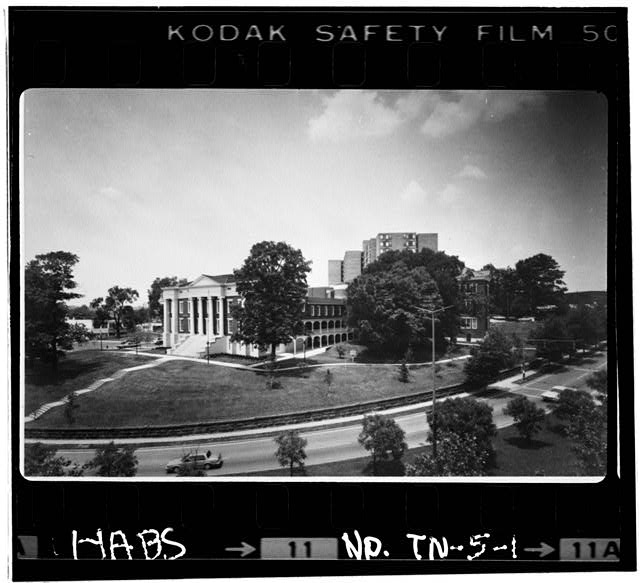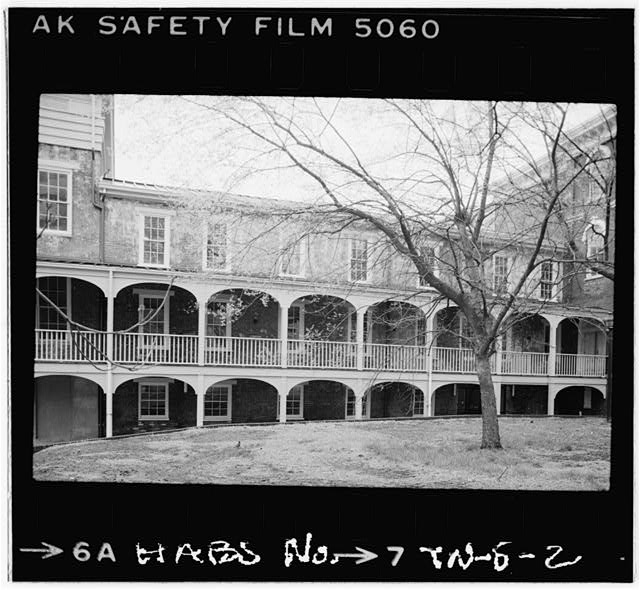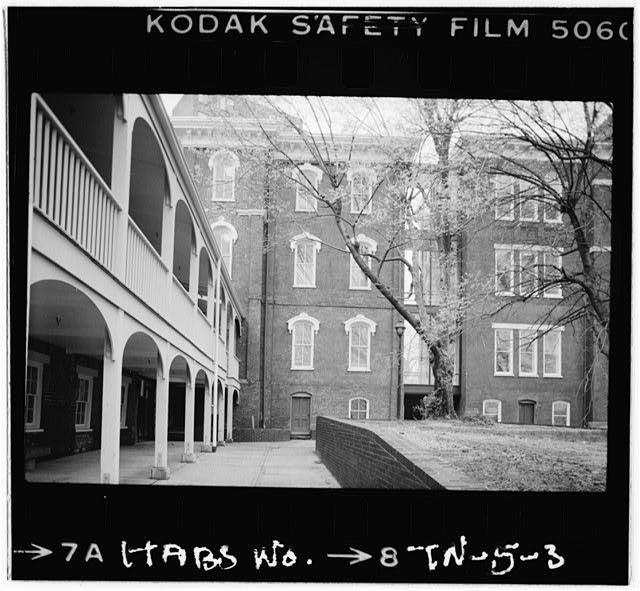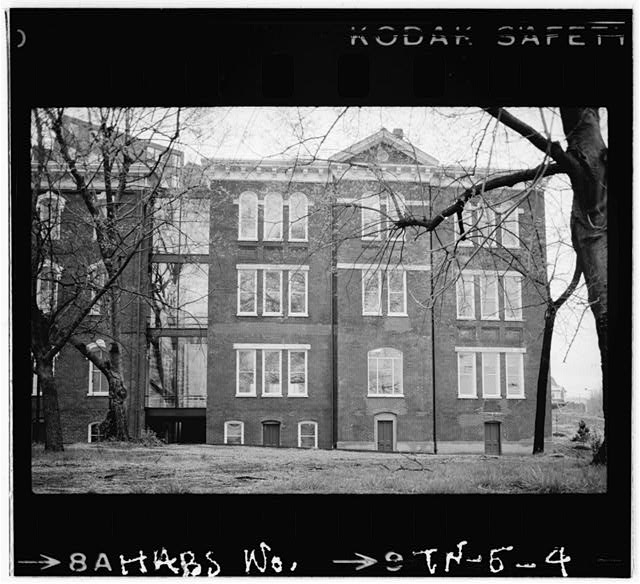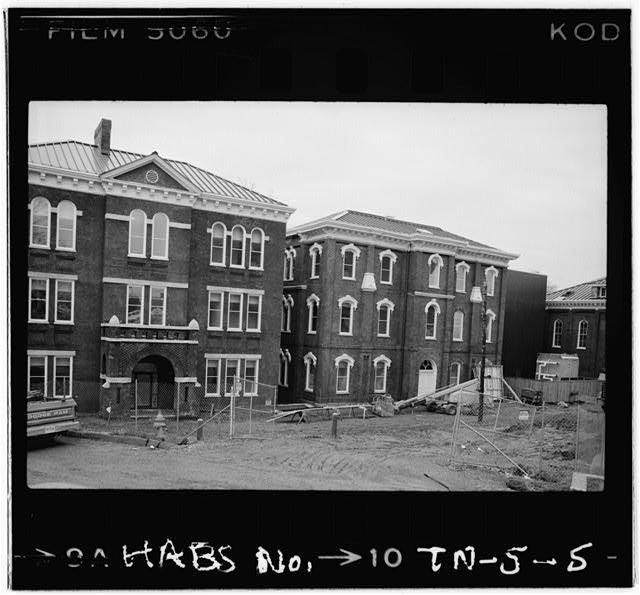The following citation contains language that may be considered offensive or harmful by today’s standards. In an effort to be more respectful and inclusive, certain terms have been revised to reflect modern, appropriate language. These changes, denoted with brackets, have been made to ensure the content is accessible and sensitive to all readers, while preserving the original meaning and intent of the source.
From Rule, W., Mellen, G. F., & Wooldridge, J. (1900). Standard history of Knoxville, Tennessee: with full outline of the natural advantages, early settlement, territorial government, Indian troubles, ...to the present time. Lewis Pub. Co. (538-540).:
The Tennessee [School for the Deaf], situated at 629 Asylum street, Knoxville, had its origin in the benevolence of General John Cocke of Grainger county, who was a member of the state senate at the time. It was on December 20, 1843, when a bill providing for the establishment of an institution for the blind in Nashville was on its third reading, that General Cocke moved to amend the bill by adding a section providing for the appropriation of $2,000 for the establishment at Knoxville of a school for the [deaf] of the state. After the substitution of $1,000 for $2,000, the amendment was adopted, and then the bill as so amended was rejected by a vote of 11 in its favor to 13 against it. Next day the vote by which the entire bill had been rejected was reconsidered, the vote on General Cocke's amendment being reconsidered by a majority of three, and then adopted by a majority of one. The bill was passed in the senate December 21, 1843, and then went to the house, where it was finally passed as it left the senate, January 29, 1844. The first board of trustees appointed by the governor was composed of the following gentlemen: R. B. McMullen, Joseph Estabrook, and D. R. McAnally, which board met at Knoxville July 27 following, and organized by the election of Mr. McMullen as president, and Mr. McAnally, secretary.
After having held correspondence with officers of similar institutions in other states, and ascertaining the number of [Deaf individuals] in Tennessee, this board selected a suitable building in which to open the school and secured the services of competent instructors. The first principal of the school was Rev. Thomas McIntire, who had been a teacher in the Ohio [School for the Deaf], under whom the school was opened in the Churchwell house, in East Knoxville, in June, 1845. On January 31, 1846, the legislature passed an act incorporating the new institution, and added to the first board of trustees Rev. T. Sullins, J. H. Cowan and Campbell Wallace.
The next important step taken was to secure the erection of more suitable buildings for the purpose of the school, and the board issued circulars to the benevolent throughout the state, and made application to congress for a donation of public lands. They also established several local agencies, and placed in the position of manager of a general soliciting and collecting agency, Col. John M. Davis of Knoxville. Through these various agencies and efforts about $4,000 was secured from individuals, which sum, supplemented by an appropriation from the legislature, enabled the trustees to erect a large building, which cost in the neighborhood of $20,000. The main building consisted of a portion three stories high and 25x79 feet, together with two wings, each of the same size, so that the main front of the building, to the south, was 100 feet in length, and the east and west front was 129 feet in length. The original site on which this building was erected consisted of two acres, donated by Calvin Morgan of Knoxville, and the remaining six acres now owned by the trustees of the school were purchased at a cost of about $6,000.
During the first session of this school the attendance was nine. In 1857 the attendance had increased to seventy, and in 1861 the school was among the largest of the kind in the United States. But when the war came on the school was disbanded and the buildings taken possession of by the military authorities, being used in turn as a military hospital by the two contending armies, until at length, in 1866, the buildings were turned over to the trustees in a badly damaged condition; but nevertheless the school was again opened on December 3 of that year. For about seven years the institution had to be managed in the most economical manner, owing to the financial depression felt throughout the state; but in 1873 an appropriation was made by the legislature of $10,000, which again placed the school on a solid foundation, and since then it has prospered in a most satisfactory manner.
In 1882 a new chapel was erected and other needed improvements made, and at the present time the school is capable of accommodating about 200 pupils.
The following citation contains language that may be considered offensive or harmful by today’s standards. In an effort to be more respectful and inclusive, certain terms have been revised to reflect modern, appropriate language. These changes, denoted with brackets, have been made to ensure the content is accessible and sensitive to all readers, while preserving the original meaning and intent of the source.
From Chapter 10: Architecture by William Ross McNabb in East Tennessee Historical Society. Knoxville History Committee., & Deaderick, L. (1976). Heart of the valley: a history of Knoxville, Tennessee. East Tennessee Historical Society. (416).:
By the 1840's various revival styles came into favor. One of these was the Greek Revival, which had originated almost a hundred years before in Europe and was popularized by such publications as Stuart and Revett's Antiquities of Athens. The Greek Revival never developed as fully in East Tennessee as in other areas and the simpler traditional forms continued to be popular until 1860. The Knox County Court House of 1842, presumably built to Armstrong's design, was a good example of the influence of the Greek Revival. It is actually transitional, since some of the old Federal detail persists; but the large recessed portico and the details of the cupola (added in 1849) are typical of the Greek Revival style as interpreted by provincial designers and builders. The most imposing building of the Greek Revival in Knoxville is undoubtedly the city hall, built for the [School for the Deaf]. This was built between 1848 and 1851 and was the most monumental building in Knoxville at the time. The handsome facade with its frontispiece of Ionic columns and its grand marble stairway are still imposing in spite of unfortunate alterations. The unknown designer (probably the builder, Jacob Newman) gave what is essentially a rather simple building an effect of grandeur and excitement by placing between the monotonous rows of windows the Ionic columns of the frontispiece and the bold piers of the end bays on either side. By thus articulating the facade, a boldness and plasticity were achieved which are very effective.


